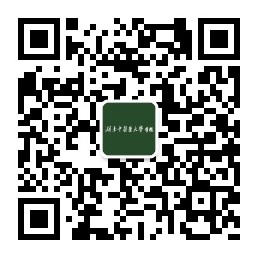| 引用本文: |
穆盼盼, 陈亦民, 段苗苗, 黄博, 阮磊, 彭亮.基于PI3K/Akt信号通路探究推法对骨骼肌过劳性损伤大鼠的修复机制[J].湖南中医药大学学报,2025,45(8):1476-1481[点击复制] |
|
| |
|
|
| 本文已被:浏览 525次 下载 396次 |
| 基于PI3K/Akt信号通路探究推法对骨骼肌过劳性损伤大鼠的修复机制 |
| 穆盼盼,陈亦民,段苗苗,黄博,阮磊,彭亮 |
| (湖南中医药大学针灸推拿与康复学院, 湖南 长沙 410208) |
| 摘要: |
| 目的 基于PI3K/Akt信号通路探讨推法修复大鼠骨骼肌过劳性损伤的作用机制。方法 将32只雄性SD大鼠按随机数字表法分为空白组(8只)和造模组(24只)。造模组大鼠通过下坡跑进行4周离心收缩运动,诱导骨骼肌过劳性损伤模型,将造模成功的大鼠再随机分为模型组、推法组和药物组,每组8只。造模完成24 h后,对各组大鼠均进行黑色棉布包裹头面部及涂抹医用凡士林处理,推法组使用自制实验动物按法仪治疗,药物组使用扶他林(1%双氯芬酸二乙胺乳胶剂)治疗,每天2次,连续治疗3 d。干预前后,采用平衡木测试评估大鼠行为学。干预结束后,HE染色观察大鼠腓肠肌组织的形态学变化;ELISA检测血浆中肿瘤坏死因子-α(TNF-α)、白细胞介素-1β(IL-1β)以及白细胞介素-8(IL-8)的含量;Western blot检测腓肠肌组织中磷脂酰肌醇3-激酶(PI3K)、蛋白激酶B(Akt)及磷酸化蛋白激酶B(p-Akt)蛋白的表达。结果 与治疗前比较,推法组、药物组大鼠治疗后平衡木行走时间均缩短、滑爪次数均减少(P<0.01)。治疗后,与空白组比较,模型组大鼠平衡木行走时间延长、滑爪次数增加(P<0.01),腓肠肌炎症细胞浸润明显,TNF-α、IL-1β及IL-8含量升高(P<0.01),PI3K、Akt、p-Akt蛋白表达量升高(P<0.01)。与模型组比较,推法组、药物组大鼠平衡木行走时间缩短、滑爪次数减少(P<0.01),腓肠肌炎症细胞减少,推法组、药物组IL-1β、IL-8含量降低(P<0.05,P<0.01),推法组PI3K、Akt蛋白表达量升高(P<0.05,P<0.01),药物组PI3K、Akt、p-Akt蛋白表达量升高(P<0.05,P<0.01)。与推法组相比,药物组IL-8含量升高(P<0.05)。结论 推法可改善慢性骨骼肌过劳性损伤,其作用机制可能是通过激活PI3K/Akt信号通路,调节相关炎症因子及PI3K、Akt、p-Akt蛋白表达,进而改善骨骼肌组织结构,抑制骨骼肌慢性炎症水平,以促进骨骼肌修复。 |
| 关键词: 骨骼肌过劳性损伤 推拿推法 扶他林 PI3K/Akt信号通路 炎症反应 |
| DOI:10.3969/j.issn.1674-070X.2025.08.011 |
| 投稿时间:2024-11-12 |
| 基金项目:国家自然科学基金项目(82174521) |
|
| Mechanism of tuina on repairing skeletal muscle overuse injury in rats via PI3K/Akt signaling pathway |
| MU Panpan, CHEN Yimin, DUAN Miaomiao, HUANG Bo, RUAN Lei, PENG Liang |
| (School of Acupuncture-moxibustion, Tuina and Rehabilitation, Hunan University of Chinese Medicine, Changsha, Hunan 410208, China) |
| Abstract: |
| Objective To investigate the mechanism of action of tuina manipulation in repairing skeletal muscle overuse injury in rats via the PI3K/Akt signaling pathway. Methods Thirty-two male SD rats were randomly divided into a blank group(8rats) and a modeling group(24 rats) using a random number table. Rats in the modeling group underwent 4 weeks of downhill running-induced eccentric contraction exercise to establish skeletal muscle overuse injury models. Successfully modeled rats were then randomly subdivided into a model group, a tuina group, and a drug group, with 8 rats in each group. At 24 hours postmodeling, all groups of rats were subjected to head and facial wrapping with black cotton cloth and treated with medical vaseline application. The tuina group was treated using a self-made experimental animal pressing manipulation apparatus, while the drug group received Voltaren(1% diclofenac diethylamine emulgel) twice daily for 3 consecutive days. Before and after the intervention,behavioral assessment of the rats was conducted using the balance beam test. After the intervention, HE staining was used to observe morphological changes in gastrocnemius muscle tissue, ELISA was used to quantify plasma levels of tumor necrosis factor-α(TNF-α), interleukin-1β(IL-1β), and interleukin-8(IL-8), and Western blot was used to determine protein expressions of phosphatidylinositol 3-kinase(PI3K), protein kinase B(Akt), and phosphorylated Akt(p-Akt) in gastrocnemius tissue. Results Compared with pre-treatment values, both the tuina and drug groups showed significantly shortened balance beam walking time and reduced paw slips post-treatment(P<0.01). After treatment, the model group rats, compared with the blank group, had prolonged balance beam walking time and increased paw slips(P<0.01), marked inflammatory cell infiltration in the gastrocnemius muscle, and increased content of TNF-α, IL-1β, and IL-8(P<0.01), as well as elevated protein expressions of PI3K, Akt, and p-Akt(P<0.01).Compared with the model group, both the tuina and drug groups had shortened beam walking time and reduced paw slips(P<0.01),decreased inflammatory cell infiltration in the gastrocnemius muscle, and reduced contents of IL-1β and IL-8(P<0.05, P<0.01). The tuina group showed increased protein expressions of PI3K and Akt(P<0.05, P<0.01), while the drug group had increased protein expressions of PI3K, Akt, and p-Akt(P<0.05, P<0.01). Compared with the tuina group, the drug group had increased IL-8 content(P<0.05). Conclusion Tuina manipulation can ameliorate chronic overuse-induced skeletal muscle injury. Its mechanism of action may involve activation of the PI3K/Akt signaling pathway and modulation of relevant inflammatory factors and protein expressions of PI3K, Akt, and p-Akt, thereby improving skeletal muscle architecture, suppressing chronic inflammation, and promoting muscle repair. |
| Key words: skeletal muscle overuse injury tuina manipulation Voltaren PI3K/Akt signaling pathway inflammatory response |
|

二维码(扫一下试试看!) |
|
|
|
|




